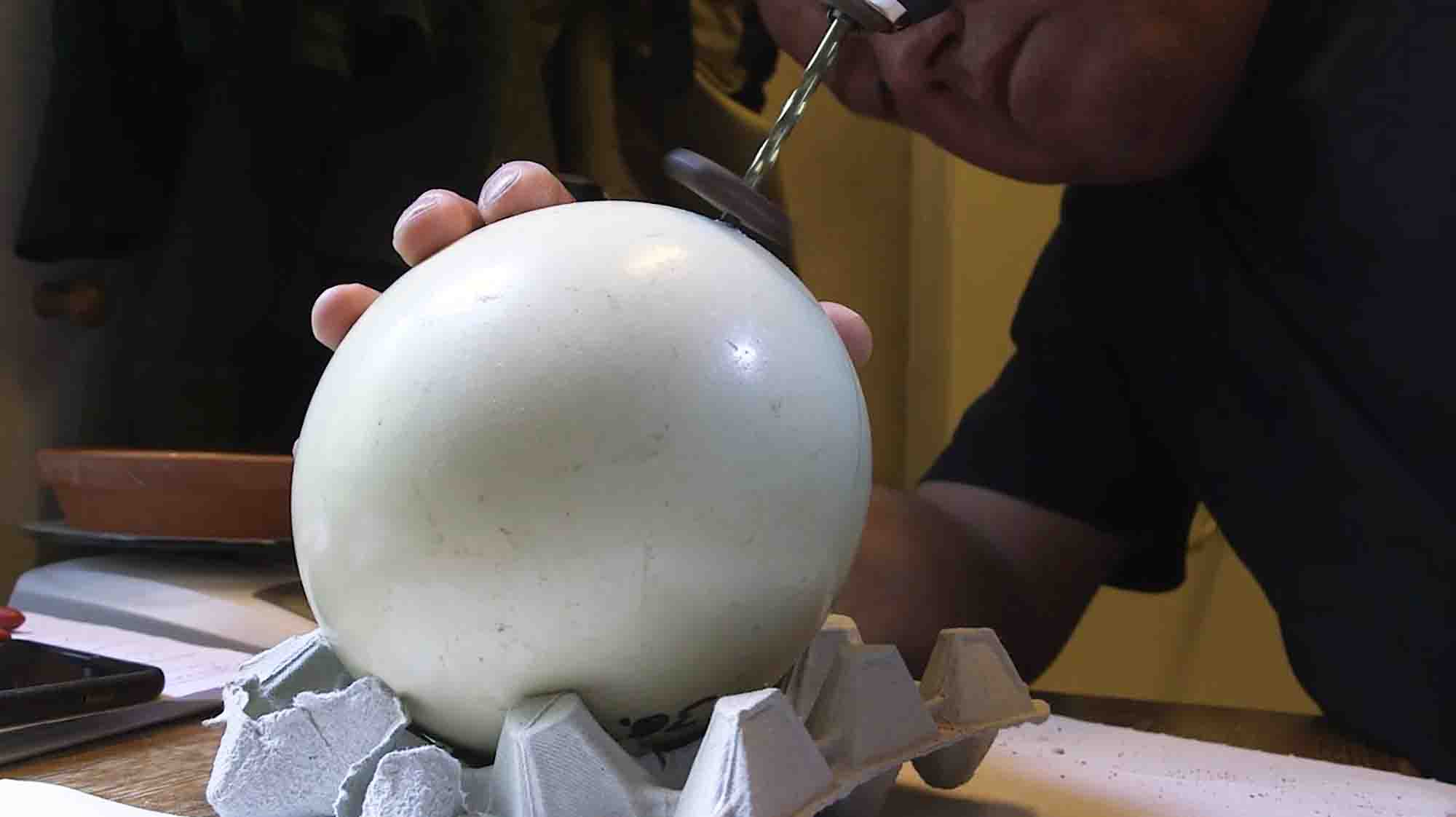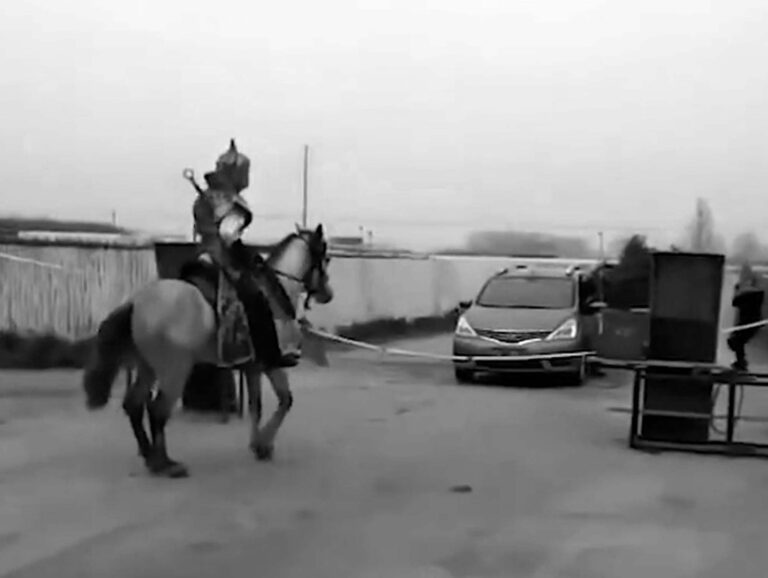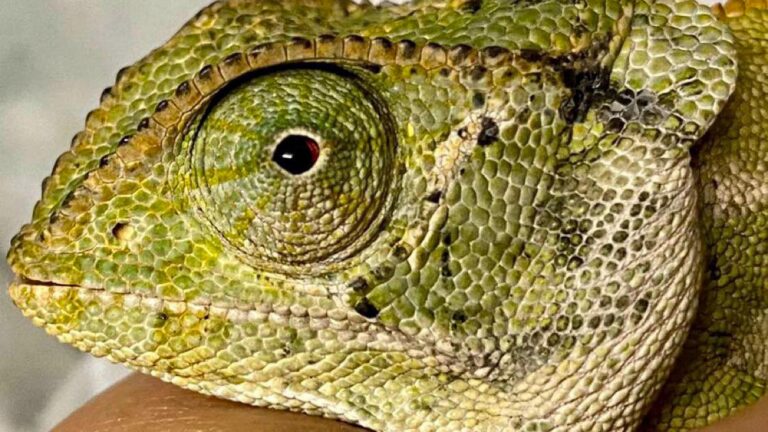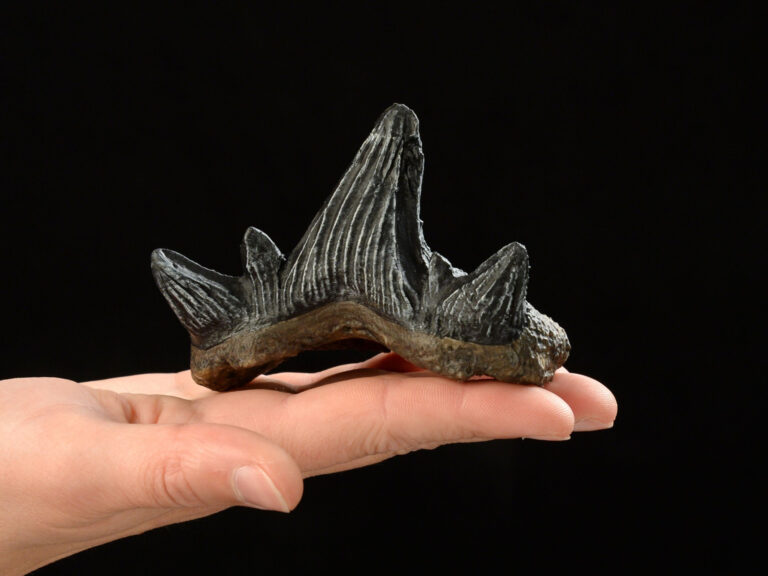Zoo keepers help a brood of adorable ostrich chicks hatch from their thick egg shells with a hammer and a power drill.
The youngsters had been developing inside their incubated shells for more than a month at the Schoenbrunn Zoo, in the city of Vienna, Austria.
Then experts decided to give them a helping hand to emerge from the thick shells of their huge incubated eggs, which are 30 times heavier than a chicken egg.
Extraordinary footage shows keepers giving the youngsters a helping hand as they pierce the shells with a power drill last month.
A hammer can be seen standing by to take on any exceptionally tough eggs.
As the hatchlings emerged they are popped back into their incubator at a constant 35 degrees Celsius until they’re dry and strong enough to emerge.
The chicks, North African red-necked ostriches, were finally allowed out to explore their enclosure.
Video footage of their first steps from 5th June shows them tucking into special high protein pellets as they graze through the undergrowth.
The chicks are already showing off the voracious appetite that gives the ostrich its reputation for eating almost anything.
And as they trot around the enclosure they’re displaying the powerful legs that enable their wild relatives to run at up to 70 kph (43mph) on the African savannas.
Keepers later told how they were from the first clutch of eggs for their mum and dad since they arrived at the zoo in 2021.
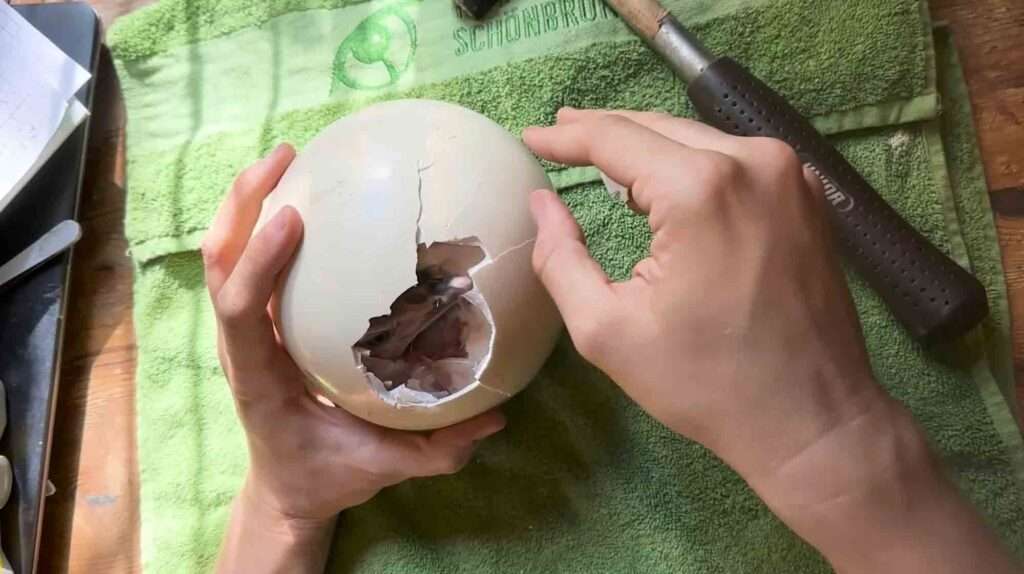
Zoo director Stephan Hering-Hagenbeck said in a statement obtained by Newsflash: “It is the largest subspecies of the African ostrich and therefore the largest and heaviest bird in the world.
“Due to poaching and habitat destruction, this subspecies is threatened with extinction.
“The population is estimated at a maximum of 1,000 animals. The largest population lives in the Republic of Chad in Central Africa.”
The chicks, which hatched in April, are still in their drab grey fluffy plumage and they have yet to develop the distinctive red necks that give them their name.
Hering-Hagenbeck explained: “The chicks grow quickly – up to three centimetres [1.1 inches] a day.
“But they still have to peck at a lot of grass, grains, insects, and leaves before they can reach the size of their parents.
“The males of the North African ostrich can weigh up to 150 kilogrammes [33 lbs]. Despite this, ostriches can reach a top speed of up to 70 KMH [43 MPH when running.”
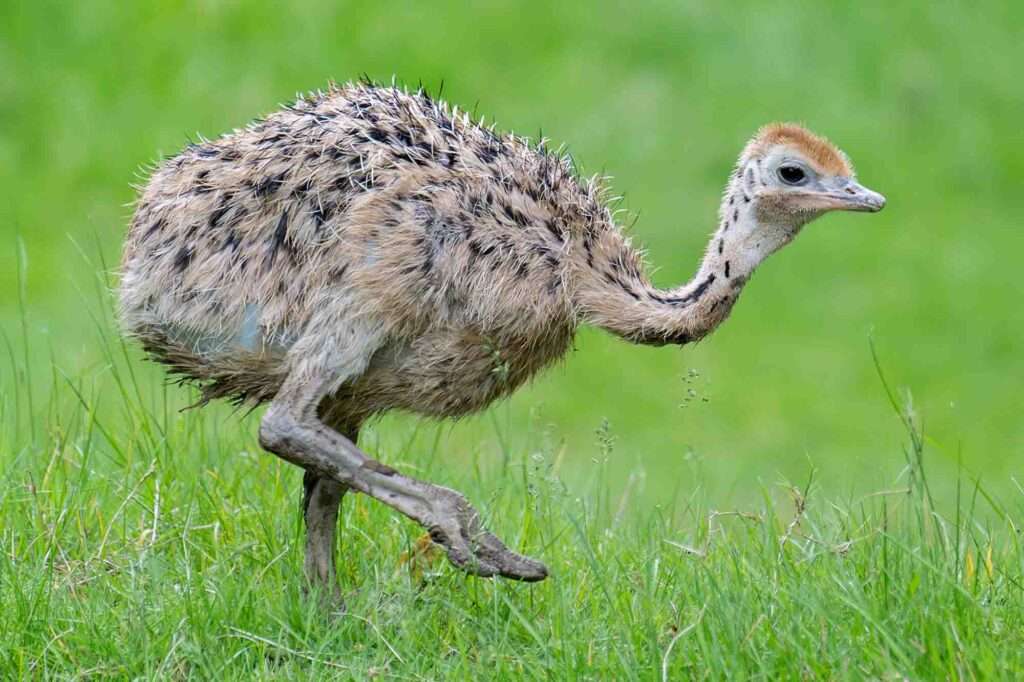
Explaining how the eggs were hatched in an incubator, curator Folko Balfanz said: “The temperature must be constant at around 36 degrees [Celsius] for 42 days, and the humidity only a low 20 to 25 per cent.
“In addition, the eggs must be turned several times a day.”
A European conservation breeding programme for the highly endangered bird outside of its natural habitat aims to boost numbers.
To find out more about the author, editor or agency that supplied this story – please click below.
Story By: Georgina Jedikovska, Sub-Editor: Georgina Jedikovska, Agency: Newsflash
The Ananova page is created by and dedicated to professional, independent freelance journalists. It is a place for us to showcase our work. When our news is sold to our media partners, we will include the link here.

